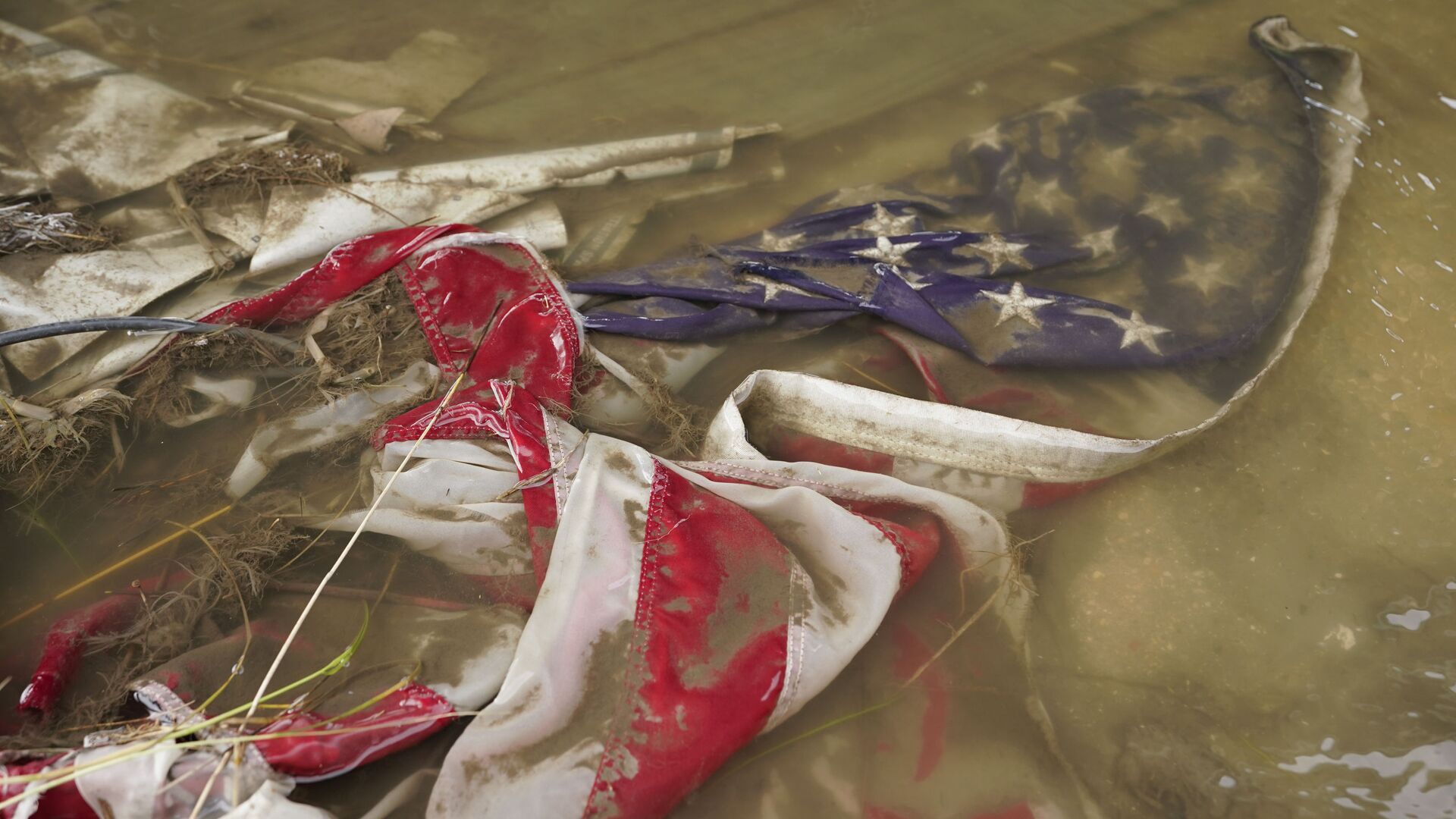https://sputnikglobe.com/20220419/us-military-bases-falling-behind-in-battle-against-climate-change-report-1094897266.html
US Military Bases Falling Behind in Battle Against Climate Change: Report
US Military Bases Falling Behind in Battle Against Climate Change: Report
Sputnik International
A report from the inspector general of the United States Department of Defense has detailed the concerning threat climate change presents to US Military... 19.04.2022, Sputnik International
2022-04-19T21:39+0000
2022-04-19T21:39+0000
2023-04-30T05:38+0000
us military
climate change
arctic
us department of defense (dod)
https://cdn1.img.sputnikglobe.com/img/07e5/09/02/1083774843_0:160:3073:1888_1920x0_80_0_0_9016d972cbe88a7e77c5d6c2bb9975af.jpg
Amid rising temperatures, floods, hurricanes, and wildfires have increasingly disrupted US Military infrastructure and training, according to a report conducted by the US Department of Defense.The military has long acknowledged the threat of climate change to US national security, and presidential and Pentagon mandates have been issued to address the changing realities of the climate.According to the report, military bases in the Arctic, where temperatures are warming three times faster than the rest of the globe, there is a concerning lack of preparedness.Senior officers gave varying answers over the lack of proactive and necessary changes. Some cited a lack of training and funding, while others deemed the requirements a “wish list” that was counter to existing priorities.While repair to structural damages, costing billions in repairs, and upgrades to existing infrastructure are deemed necessary to keep the bases operational, extreme weather events have also disrupted training.At Fort Wainwright in Alaska, only 59% of planned training for two Pacific Air Force squadrons was able to be conducted for a period in 2019 due to increased wildfire risks.The push and pull between meeting the day-to-day demands of operating a US military base and planning for the future has seen senior officers prioritize the here and now.The six bases located in the Arctic and sub-Arctic are viewed as critical to counter the growing influence in those regions from Russia and China. With ice sheet melt, shipping lanes are expected to open up and untapped strategic resources could become available.The report also detailed that 66% of the 79 US military installations are vulnerable to flooding, and 50% face challenges from wildfires.
https://sputnikglobe.com/20220419/us-senate-subcommittee-to-release-report-on-mistreatment-by-private-military-housing-contractors-1094895390.html
arctic
Sputnik International
feedback@sputniknews.com
+74956456601
MIA „Rosiya Segodnya“
2022
Sputnik International
feedback@sputniknews.com
+74956456601
MIA „Rosiya Segodnya“
News
en_EN
Sputnik International
feedback@sputniknews.com
+74956456601
MIA „Rosiya Segodnya“
Sputnik International
feedback@sputniknews.com
+74956456601
MIA „Rosiya Segodnya“
us military, climate change, arctic, us department of defense (dod)
us military, climate change, arctic, us department of defense (dod)
US Military Bases Falling Behind in Battle Against Climate Change: Report
21:39 GMT 19.04.2022 (Updated: 05:38 GMT 30.04.2023) A report from the inspector general of the United States Department of Defense has detailed the concerning threat climate change presents to US Military installations across the globe and, in particular, the Arctic.
Amid rising temperatures, floods, hurricanes, and wildfires have increasingly disrupted US Military infrastructure and training, according to a
report conducted by the US Department of Defense.
The military has long acknowledged the threat of climate change to US national security, and presidential and Pentagon mandates have been issued to address the changing realities of the climate.
According to the report, military bases in the Arctic, where temperatures are warming three times faster than the rest of the globe, there is a concerning lack of preparedness.
The inspector general report reads, “most installation leaders at the six installations we visited in the Arctic and sub-Arctic region were unfamiliar with military installation resilience planning requirements, processes, and tools.”
Senior officers gave varying answers over the lack of proactive and necessary changes. Some cited a lack of training and funding, while others deemed the requirements a “wish list” that was counter to existing priorities.
“Officials from five of these installations said they had not begun incorporating future climate risks into their installations’ planning,” according to the report.
While repair to structural damages, costing billions in repairs, and upgrades to existing infrastructure are deemed necessary to keep the bases operational, extreme weather events have also disrupted training.
At Fort Wainwright in Alaska, only 59% of planned training for two Pacific Air Force squadrons was able to be conducted for a period in 2019 due to increased wildfire risks.
The push and pull between meeting the day-to-day demands of operating a US military base and planning for the future has seen senior officers prioritize the here and now.
According to the report, senior officers, “stated that their day-to-day focus was on reacting to immediate problems or reducing risk to existing hazards, rather than planning for future hazards.”
The six bases located in the Arctic and sub-Arctic are viewed as critical to counter the growing influence in those regions from Russia and China. With ice sheet melt, shipping lanes are expected to open up and untapped strategic resources could become available.
The report also detailed that 66% of the 79 US military installations are vulnerable to flooding, and 50% face challenges from wildfires.




